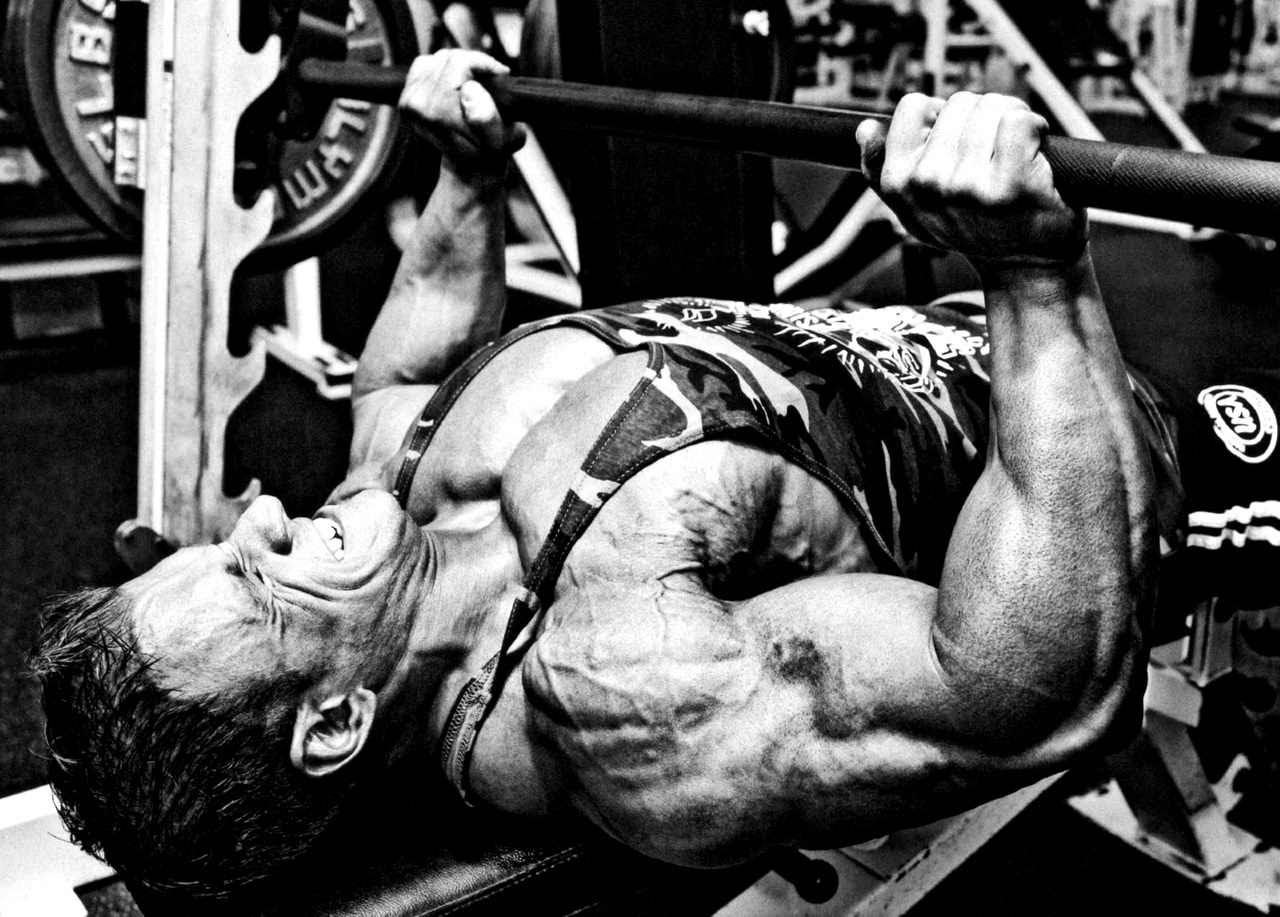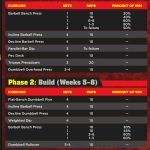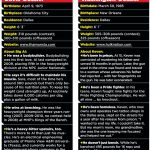Two of the world’s best raw bench pressers dish on what it takes to get 600pounds off your chest and provide an easy-to-follow program that can help you add a plate to each side of the bar in less than three months.
There’s no politics in bench pressing, says 320-pound Keven “Da Hulk” Washington, who’s managed to raw-bench 635 pounds in competition and 670 in the gym. “It’s just me and the weight. Either I get it or I don’t.”
If his approach sounds simplistic and survivalist, that’s because it truly is. As a pre-teen, Keven’s father forced him to confront his fear of going too heavy on the bench.
“My dad let a bar with a 45 on each side drop on my chest in a Smith machine and walked away,” he recalls. “It was stuck on my chest for three minutes. I couldn’t move it. He was threatening me, mocking me. I got tired of crying. I was so pissed that I just pushed it out and came and sat at the table with him. He told me ‘I’m your father and I love you but you’re stronger than you think.’”
While Keven’s methodology is unrefined and brutish — he says he’s “got 99 problems but a bench ain’t one” — his training partner and mentor favors a more cerebral approach.
“I’m not a gym rat,” says “Big” Al Davis, who plucked Keven from the bustling Dallas gym scene after seeing him press 600 pounds without a spot. “I don’t work out for a hobby. I’m a degreed engineer and I take a lot of the methods by which I would analyze an engineering problem into the gym. I do a lot of evaluation. I’ll video my own workout sessions and I’ll watch them over and over, trying to prove what was wrong with a lift.”
Al, himself a 300-plus-pound behemoth, has put up 700 pounds in the gym and 670 in competition — all raw.
Now, these two MHP-sponsored titans are taking aim at Scott Mendelson’s legendary raw bench press record of 715 pounds, set back in 2005. Al figures he has a realistic shot at doing it this year and estimates that Keven, whose training schedule has been modified to accommodate an injury, isn’t that far from 715 himself. Put it in perspective: What do you and your training partner combine to bench? Our guess is that it’s 1,400 pounds minus a lot.
Here, Big Al and Da Hulk break it down for you (see “7 Keys to Power Up Your Bench” below). Breathing, hand spacing, mental clarity, programming and more — all the elements you need to achieve a new personal best on the bench. What you do with all that pressing power after this is up to you.
“This is how I’ve taken clients up from 225-315, from 315-405, and from 405-495,” says Al. “In just a few weeks.”
THE “ADD A PLATE” PROGRAM
Now that you’ve got the finer nuances of the bench press down, it’s time to get to work. The following 10-week, three-phase program is one that’s been used by Keven and Al for years and always with outlandish increases in their single-rep maxes. They’ve also used this program with personal-training clients needing an edge in the strength department. Insert this workout into your regular routine on chest day and make sure your total workout volume for shoulders and triceps isn’t excessive — the bench press is your focus for these 10 weeks.
“This program hits all the necessary muscle groups for a big bench,” Al says. “I train as more of a powerbuilder. Most of my workouts don’t include singles, doubles and triples. There’s quite a bit of volume, so you’re getting your muscles full of blood to induce breakdown and growth but you’re also getting stronger. Training for fewer reps with 95% isn’t the only way to get strong — 60-70% max loads also improve your strength. This routine will help with conditioning, performance as well as strength.”
“Big” Al claims it’s not uncommon to add a plate to each side of the bar by the time these 10 weeks are up. How well will you fare?
PHASE 1 (Weeks 1-4)
In this phase, you’re building an ample base from which to work. Not surprisingly, you begin each workout on the flat bench. What may surprise you is the prescribed load for your first set: 20% of your 1RM. For someone who maxes out at 315 pounds, that means you’re loading the bar with about 65 pounds and working out 10 reps. Though this is considered a warm-up set, it isn’t a throwaway, Al says. You should still be focused intensely on getting a strong muscle contraction with each rep. Also, you should practice pressing out of the bottom with speed to start firing up your fast-twitch fibers for the work ahead. Your second set calls for 40% for another 10 reps. After that, you perform 6-8 reps with 60% of your 1RM — that’s roughly 190 pounds for the guy with a max of 315. Your heaviest set calls for 1-3 reps at 80% of your max, or 250-ish pounds. You finish your flat-bench work with two sets to failure at 50% of your 1RM. This final act on the bench flushes your muscles with blood and brings your total number of sets to six. What you miss out on in total pounds is made up for in calculated volume. And your work’s only beginning.
From there you move on to your “supporting” exercises, including more pressing work on the incline bench, decline bench, and dip bars, before finishing with a few sets on the pec deck to further induce tissue breakdown. After your chest is fully fatigued, Al and Keven move their attention to triceps with a few high-rep sets of pressdowns. “They’ve already contributed to the heavy moves so this is just auxiliary work,” Al says.
You’ll finish workouts during this phase with dumbbell overhead presses, which may seem curious but Al explains: “It’s working your delts and triceps. The stronger they are, the faster the bar will come off your chest in the press.” Of course, Al notes, you won’t be going as heavy at this stage of the workout as you would on shoulder day when your delts are rested and you can press heavy from the get-go.
PHASE 2 (Weeks 5-8)
This phase, Al says, is where you build most of your bench press strength, so you probably think it strange to begin your workout with a single-joint move.
“In this phase, you want to pre-exhaust your chest,” Al says. “Then, you come to the bench. You may not be able to do as much as when you started fresh in Phase 1. The benefit of this order is that your body instinctively starts to rely more heavily on fibers that aren’t commonly called into play through your heavier sets. Your triceps, for example, work much harder in this phase and that’s beneficial for later on. I like to say we’re ‘digging deep.’ And the target percentages are slightly higher because you’re already warm.”
Al concedes that the working sets on the bench will be tougher, so having a reliable spotter is recommended. “This phase can be dangerous in the sense that a person has to know his body and what it’s capable of beforehand.” (See “Find Your Max” on pg. 198.)
“If you’ve done things properly, you will absolutely be toast,” says Al.
Again, however, during your flat-bench work it’s important to be explosive out of the bottom portion of the lift on your submaximal sets. “If your body is accustomed to lifting while it’s exhausted, completing a 1RM is a lot more probable than if you were to always train fresh.”
PHASE 3 (Weeks 9-10)
These final two weeks are a repeat of the first phase but with a marked decrease in volume designed to facilitate recovery. It puts a little bit of fuel back in the tank for when you decide to recalculate your max in Week 11.
“I always do this in the weeks before a show so that I can focus on strict technique, breathing and pure strength,” says Al. “You should, too!”
PHASE 4 (Week 11)
You can go old school with a spotter (or two) and simply work up to a new 1RM on the bar, or you can try out your new 5RM to calculate your 1RM with 99% accuracy.



